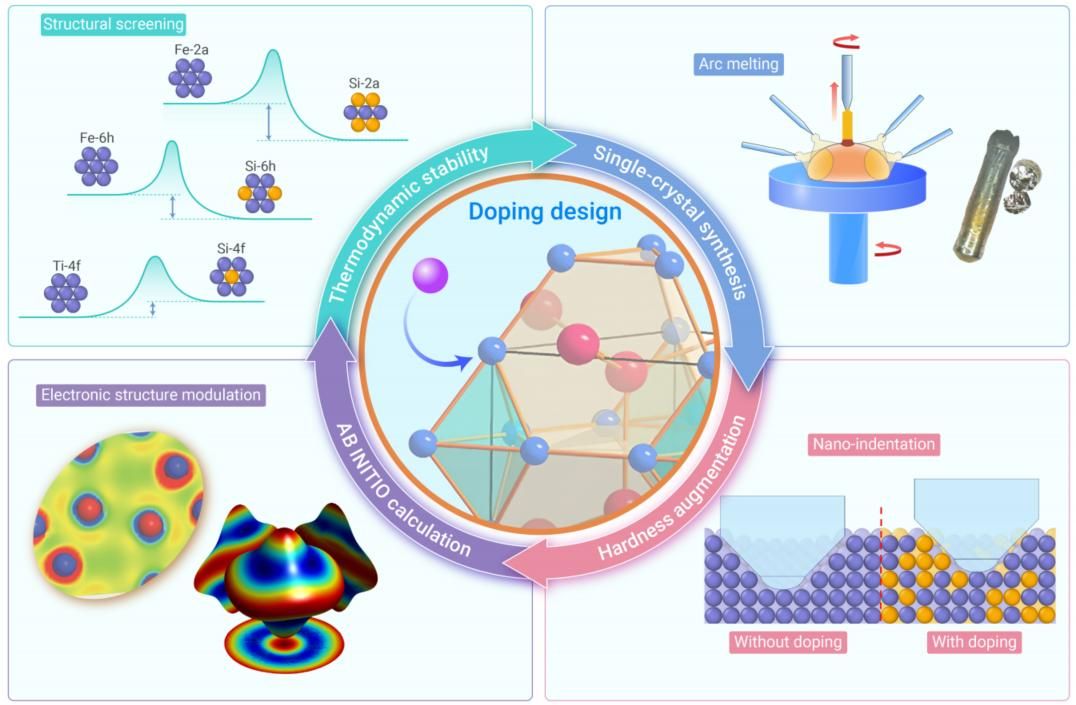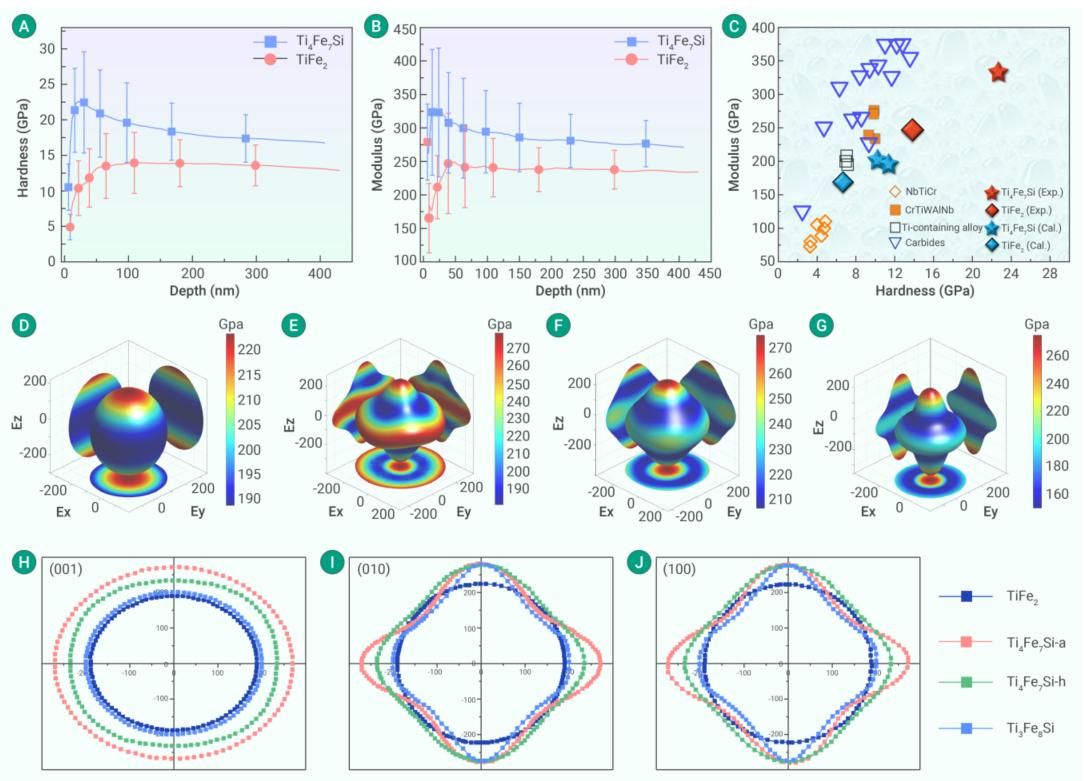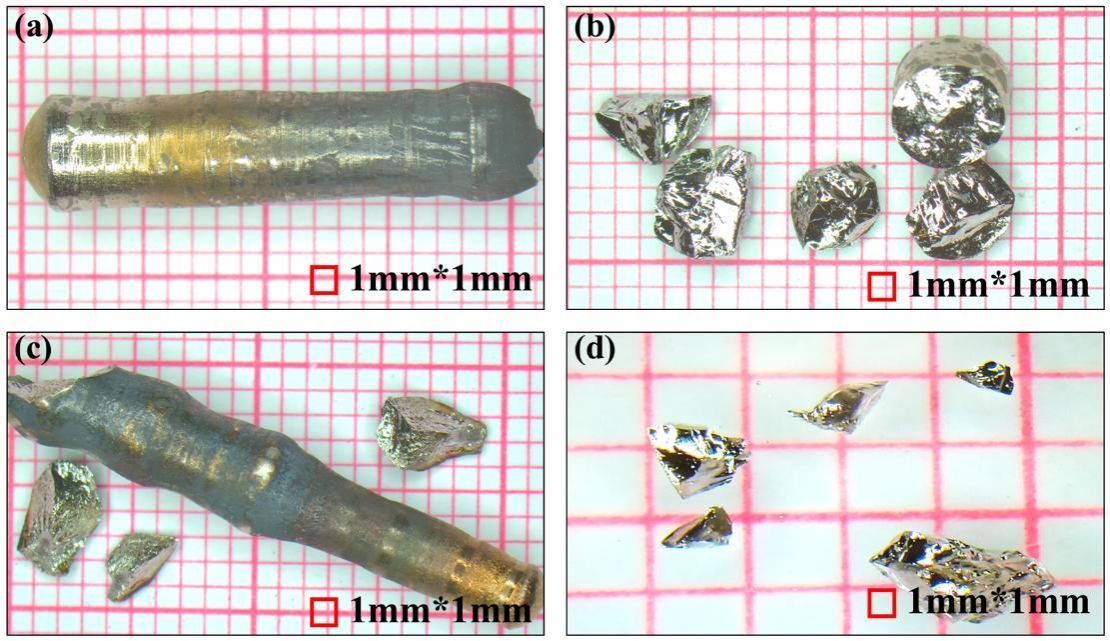Published by: Advanced Steel Materials Team Edited by: Cheng Yu
WUST News - The Advanced Steel Material Team at Wuhan University of Science and Technology (WUST), led by Professors Hou Tingping and Wu Kaiming in collaboration with Researcher Liu Wuming from the Institute of Physics, Chinese Academy of Sciences, recently published a significant paper titled Hardness augmentation engineering of TiFe2 with doping design and single-crystal realization in The Innovation Materials, a sister journal of The Innovation. The study systematically reveals the mechanism by which silicon (Si) doping enhances the structural stability and mechanical properties of titanium-iron (TiFe₂) compounds. Graduate student Tan Xinyang is the first author of the paper, and WUST is the first corresponding institution.
This research successfully achieved the controllable synthesis of Si-doped TiFe2 single-crystal materials through a complete technical route of doping design—single-crystal preparation—performance testing—mechanism analysis. The team thoroughly characterized the material’s microstructure and macroscopic mechanical properties. Experimental results demonstrate that Si atoms preferentially occupy the Wyckoff position 2a in the TiFe2 crystal, effectively reducing the system’s formation enthalpy and reaction energy while significantly enhancing its thermodynamic stability.

Figure 1 Performance design and mechanism analysis of Si-doped TiFe2
Nanoindentation tests revealed that the hardness of the material increased by 63.8% and the elastic modulus by 33.7% after Si doping, indicating outstanding mechanical reinforcement. Electronic structure calculations further showed that Si enhances covalent bonding and optimizes interatomic charge distribution, elucidating the intrinsic mechanism behind the performance improvement.

Figure 2 Improvement in mechanical properties (hardness and modulus)
It is particularly noteworthy that the preparation of single-crystal samples received substantial assistance from Professor Shi Youguo's team at the Institute of Physics, Chinese Academy of Sciences. Their advanced single-crystal growth techniques ensured high-quality samples, providing a solid foundation for subsequent experimental validation.

Figure 3 Single-crystal sample
Hou Tingping stated that this work not only theoretically elucidates how doping elements affect the structure and properties of Laves phase intermetallic compounds but also experimentally validates the possibility of performance regulation, holding significant theoretical and practical value.
Researcher Liu Wuming, who participated in this collaborative research, pointed out that the results reflect a high degree of integration of computational and experimental materials science, offering new perspectives for functionalizing transition metal intermetallic compounds.
This study was supported by the National Natural Science Foundation of China, with key experiments conducted at the State Key Laboratory of Refractories and Metallurgy, and the Collaborative Innovation Center for High-Performance Steel Materials and Application. This achievement underscores WUST’s growing research capabilities in advanced metal materials and demonstrates new potential in interdisciplinary materials science.
The Innovation is a comprehensive English academic journal co-founded by Youth Innovation Co., Ltd. and Cell Press in 2020, promotes interdisciplinary scientific discoveries and encourages free exploration. It is classified as a Q1 TOP journal, with a 2024 CiteScore of 53.4 and an Impact Factor of 25.7 as of June 18, 2025 (five-year IF: 40.2). (Advanced Steel Material Team)